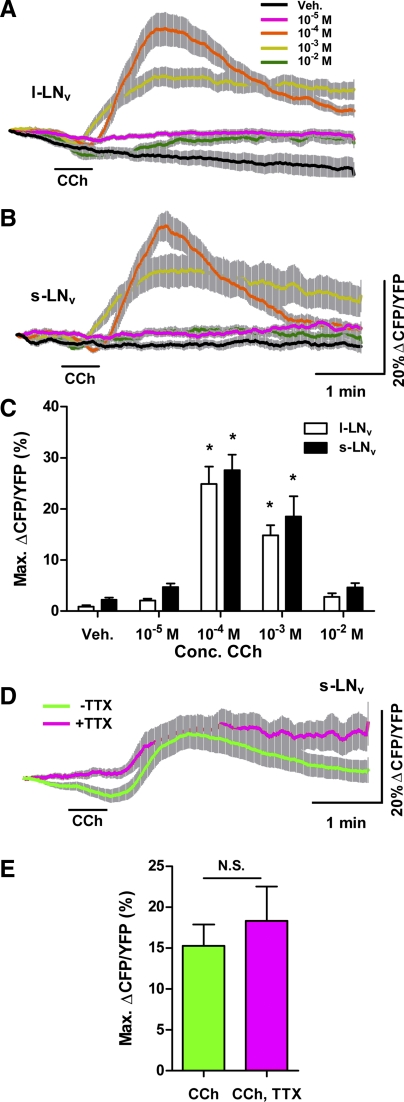Fig. 3.
The general cholinergic agonist CCh causes cAMP increases in adult LNvs. A and B: mean ± SE inverse Epac1-camps FRET traces recorded from single l-LNv (A) and s-LNv (B) somata from brains treated with 30-s perfusions of 10−5, 10−4, 10−3, and 10−2 M CCh. Scale bars in B also apply to A. For A, nveh = 15 neurons from 6 brains (15,6); n10−5 = 17,7; n10−4 = 17,7; n10−3 = 17,7; n10−2 =17,7. For B, nveh = 12,5; n10−5 = 15,6; n10−4 = 15,6; n10−3 = 15,6; n10−2 = 15,6. Key in A also applies to B. CFP, cyan fluorescent protein; YFP, yellow fluorescent protein. C: summary of mean ± SE maximum increases in inverse Epac1-camps FRET from l- and s-LNvs data displayed in A and B. Asterisks indicate a mean maximum inverse FRET ratio change that was significantly different from the ratio change evoked by Veh (P < 0.05 by Kruskal-Wallis ANOVA and Dunn's multiple comparisons test). D: mean inverse Epac1-camps FRET traces for single s-LNv somata from brains treated with 30-s perfusions of 10−4 M CCh in the presence (magenta; n = 25,10) or absence (green; n = 34,10)of 2 μM TTX. E: summary of mean maximum increases in inverse Epac1-camps FRET based on s-LNv data displayed in D. There was no significant difference in maximum inverse FRET change between the +TTX and −TTX conditions (P = 0.4074 by Mann-Whitney U-test).

